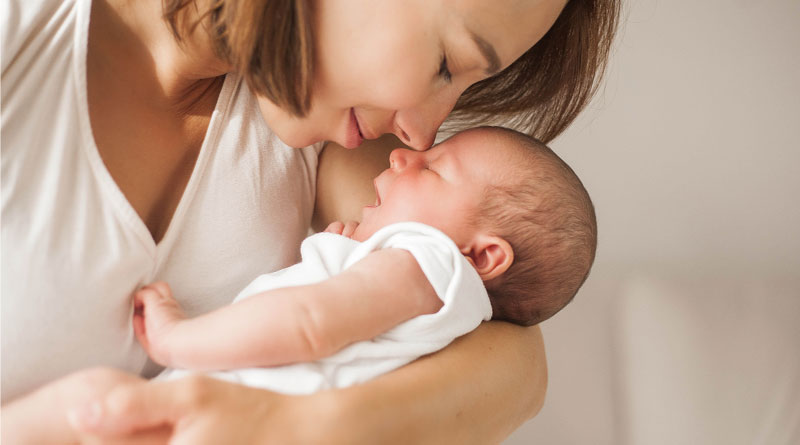To be or not to be a mother? The Motherhood Dilemma
By: Maria Alejandra Pulgar
Motherhood was considered for centuries as the ultimate goal for women. Regardless of the conditions that surrounded them, a female’s main role in society was to be the instrument for increasing the population. That concept has changed since the 1950s when women started to gain more education and influence, becoming more active in the labor market and making decisions on when to get married or have children.
This shift in behavior has occurred worldwide. With every generation, younger women are delaying motherhood, having fewer children than their ancestors, or deciding not to have children altogether. Their reasons are multiple and go from continuing with their education; pursuing their professional career; having health issues; delaying finding a partner; the cost of raising children or even worrying about the future of the planet.
On the other hand, there are still many women who look forward to having babies, either on their own, with a partner, through adoption, or surrogacy. There is no scientific evidence that the “Maternal Instinct” exists for all women, however, there are those who dream of being mothers, creating a family to pass down their genes, values, and culture to another generation.
Society has created the Motherhood Dilemma for women. Sometimes life circumstances lead women with a strong desire to be mothers through a path where they do not have the opportunity, while others who do not want children become mothers. Although the role of being a mother is undeniably one of the most important missions in a woman’s life, it is not the only measure to consider to determine her influence in the future of society.
Children are expensive!
A recent Pew Research study analyzed the changing motherhood trends in the US from 1950 until 2022 and found that their strong desire to pursue career aspirations, increased dissatisfaction with traditional roles, and furthering their education were the main reasons women had to delay motherhood until later in life. More than 60% of women between 18 and 49 believe that having a successful career is essential to them, making them willing to wait to have children, moreover when they want to give them a wealthy standard of living.
Raising a child has become expensive. A report from the US Department of Agriculture estimates “the cost of a child born in 2015 until age 17 is $233,610” for a middle-income family. The estimate is based on the cost of childcare, food, education, and healthcare; no wonder younger generations want to establish their wealth before confronting parenthood and decide to have fewer children than they intended or compared with their parents or grandparents.
In the past, women were expected to marry and have children at a young age; they ended up not pursuing higher education or a career, focusing only on raising their families. The average number of children per woman was also higher than it is today. In the US, the fertility rate was 3.7 children per woman in 1960, compared to 1.64 children per woman in 2020. In Europe, the fertility rate was 2.4 children per woman in 1960, compared to 1.53 children in 2020.
As the decision not to have children or to delay motherhood has become more socially acceptable, many women are choosing to focus on their own goals instead of raising a family. The study found that 27% of women in the US aged 18-44 reported that they did not want to have children at all.
Women between 18 and 25, expressed in the study that seeing their mothers confront inequities in salary and working conditions, unpaid maternity leaves, and their struggle to balance work and family life, discourages them from thinking about becoming mothers; they do not want to go through the same trouble in the future.
The trend of delaying motherhood or choosing not to have children has significant implications for the future of the world; fewer births will lead to an aging population, impacting healthcare and social security systems. The study shows that in countries where the birth rate is below the replacement rate of 2.1%, such as Japan and Italy “the population is projected to decline, which will have severe economic and social consequences” as there will be fewer workers to contribute to the country’s economic growth and support the aging population.
Perfect Future of Love: Children
On the other hand, there are those who have dreamed of having children all their lives and go above and beyond to fulfill that desire from their hearts. A growing trend of women executives and artists in their 40s, who have not been able to become pregnant, have adopted children in foreign countries or hired surrogate mothers to achieve their goal of having children.
There are also those who were not sure about being mothers, but life gave them the chance, by surprise or after a conscious and planned decision, and end up loving the process. No matter how many children a mother has, they are the most important thing in their life, and will always the extra mile to care for and provide for them.
There is not a single mother, regardless of the method used to achieve motherhood, who says that having children is an easy task. Children are a humongous responsibility, that demands a lot of work and dedication, and raising them is a labor of unconditional love, a test of patience, and a gamble for the future. Parents, especially mothers, always wonder if they are doing their job well. That is why it is so important to have a Mother’s Day, to recognize the work of mothers or motherly figures who have decided to tackle the job with no training whatsoever since the very beginning.

